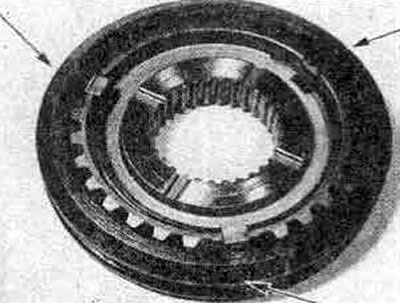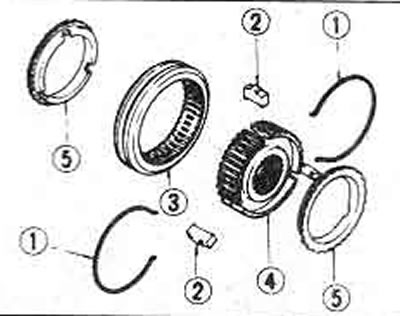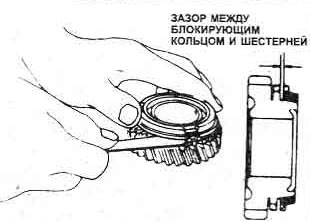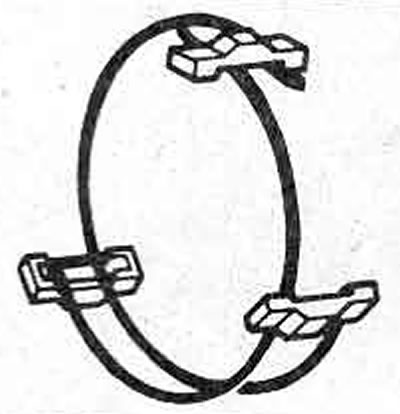2. Check the condition of the gear teeth and bushings.
3. Check the shafts (backlash, development).
4. Check the bearings by quickly rotating them with your fingers. If they vibrate or rattle, or show visible signs of wear or damage, replace them.
5. If the measured backlash of the mechanism gear is outside the specified limits, check the working surfaces of the mechanism bearing, shaft and synchronizer hub, and the fit of the mechanism on the bearing or bushing. Replace worn components.
6. Wear in synchronizers is accompanied by noise when selecting a gear. Note that it is considered good practice to replace the locking rings, especially if the vehicle has high mileage (photo).

9.6. Checking synchronizer wear - pay attention to the indicated areas
7. Disassemble the synchronizers, marking the location of the components with paint. Guided by Fig. 6.12, remove the spacer springs, push the hubs out of the bushings, remove the displacement inserts from the hub.

Pic. 6.12. Synchronizer details: 1. Spacer spring; 2. Sliding insert; 3. Bushing; 4. Hub; 5. Locking ring
8. Check the synchronizer components and the installation locations of the blocking rings. Check with a feeler gauge that the gap between the mechanism and the locking ring is not less than a certain value (Pic. 6.13). If necessary. replace the locking ring.

Pic. 6.13. Checking the wear of the locking ring
9. When assembling synchronizers, make sure that the spacer springs are installed towards each other when viewed from each side of the block, and the ends of the springs fit into the retaining inserts (pic. 6.14).

Pic. 6.14. Installation direction of synchronizer spacer springs
10. Replace any O-rings, seals, roll pins or fasteners and thrust rings that were damaged during reassembly; never reuse them.